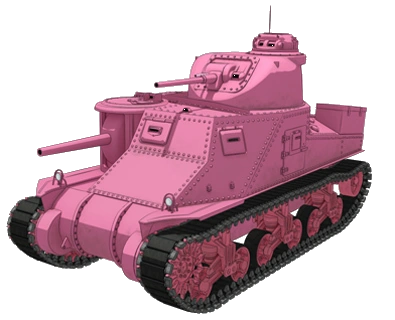The background
WW1 rages 1914-1918. Widespread use of poison gas and chemical warfare cause radical changes to weather patterns - frequent storms, and toxic rain. Vast tracts of Europe are left uninhabited. Birth defects and mutations skyrocket. Viral and biological weapons become commonplace.
1918 - the Plague appears. Both sides blame each other for deploying the weapon. The war grinds to a halt in 1919 as whole armies are destroyed. The Plague has a 90% mortality rate and rapidly spreads to other continents. Governments soon collapse. Europe quickly becomes quasi-fuedal, with private armies, roaming gangs imposing a harsh law of might.
Most of the world is depopulated and nature starts to reclaim many towns and cities. Mutants, cannibals and wild beasts roam the countryside. Humanity for the most part lives in fortified enclaves, guarded by walls or barbed wire. Half-track caravans, escorted by tanks, form trade convoys between inland cities as rail links can be too predictably raided.
The war machinesTanks, developed to break the stalemate in trench warfare, have proven ideal to traverse the hostile wastelands, ruined cities and decaying road systems. Even the lightest armour is proof against savage creatures and mutants. Tanks can be rigged against the toxic rains that limit aerocraft, which promised so much in the War. The great fortified factory-cities of Detroit, Leeds, Tankograd and Nibelungenverke continue to churn out hundreds of machines to meet the demand.
Light tanks are cheap and popular for patrolling, escort, raiding and reconnaisance. Tank destroyers are usually cheap vehicles equipped with high power guns. Heavy tanks and assault guns are used to assault enemy strongpoints. Medium tanks are a jack-of-all-trades and perform a variety of roles.
The now
It is Europe, 1945. It is 25 years since the Great War that ruined the world. The largest political bodies are small nation-states of allied cities. Most cities retain militias and are well fortified with barbed wire, automatic weapons, pillboxes, spotlights and anti-tank guns. Many hire mercenary tank forces to supplement their forces, especially when on war footing with their neighbours.
Mercenary Tank Troop
You are the commander of a mercenary tank troop - up to 12-15 tanks. Depending on the role, this typically includes two platoons of 3-5 medium tanks and various supporting vehicles - heavy tanks, light recon tanks etc which often are deployed in pairs. For ease of supply and maintenance, vehicles are usually sourced from a single factory, although supplies for some common tanks like the Sherman or T-34 are readily available almost anywhere.
Your missions are diverse; and can include patrolling, protecting or raiding convoys, assaulting or defending fixed positions, supporting infantry, or establishing local superiority over enemy tanks. Sometimes tanks can spearhead exploration missions into ruined cities looking for useful salvage.
Tankhiem
As you can guess from its name, Tankhiem is meant to be a narrative skirmish game. This means I'll track crew's "XP" like a RPG - tank crew can 'level up' and gain skills and traits. (XP!)
Tanks can also be customized; with more powerful engines, special ammo, add-on armour - sometimes even upgunned which along with 'supplies' (ammo, fuel) can be either bought or salvaged. (Loot!)
A mercenary force can gain a 'mobile workshop' that makes repairs and customisations cheaper (Crafting!)
Basically, I want an excuse to use my 15mm tanks, I'm disinterested in FoW/Bolt Action, and if I wanted a mass battle game I'd use 1:300 microarmour or play Steel Division on PC.
I'll probably post more on this topic as I fiddle with the design of the game; this post is to 'orientate' readers as to the intent and atmosphere of the game (which plays a role in game design choices).
A few design notes I'd made for myself:
(+) Crew matter. Crew are the heroes of the story. Ace tankers win. Make most actions hinge on crew skill. Better crew do more stuff and react faster/better (spot earlier, shoot first or more often).
(+) Gameplay over simulation. E.g. buff and nerf tanks to make light tanks/early war tanks viable while retaining the respective role/feel of the tank. Tanks should feel different, without having to argue over 23mm vs 25mm of armour. Lean into the idea of tank 'classes.'
(+) Campaign rules. Crew skills/traits. Tank repairs/upgrades.
(+) Fast play. ~6 tanks per side = 1hr game. Complexity is allowed in crew and activation, but dice rolling for shooting/damage etc should be simple.
(+) Not too much recording or tokens. Maybe can damage mobility, crew or gun, or 'killed.' Maybe crew shock/suppression. No more recording than a typical GW skirmish game.
(?) Spotting. This is a big deal IRL but 15mm on a 4-6' table seems silly not to see a tank 12"away. Use commonsense. Scale is 12"= ~500m but that's not to be 'real' ground scale - just differentiate weapons. Autospot range bands? Or dice roll? Or just cover/not cover. Definitely have narrow view arc though.
(?) Supplies. Each tank costs supplies, so you choose what/how many tanks to bring and don't just automatically field everyone. A better warband = better choice, not a bigger army on the table.
(?) Infantry. It's about tanks. Keep simple. Maybe just base on FoW style bases and move as 'crew' or rifle team, not individually.















 \
\












